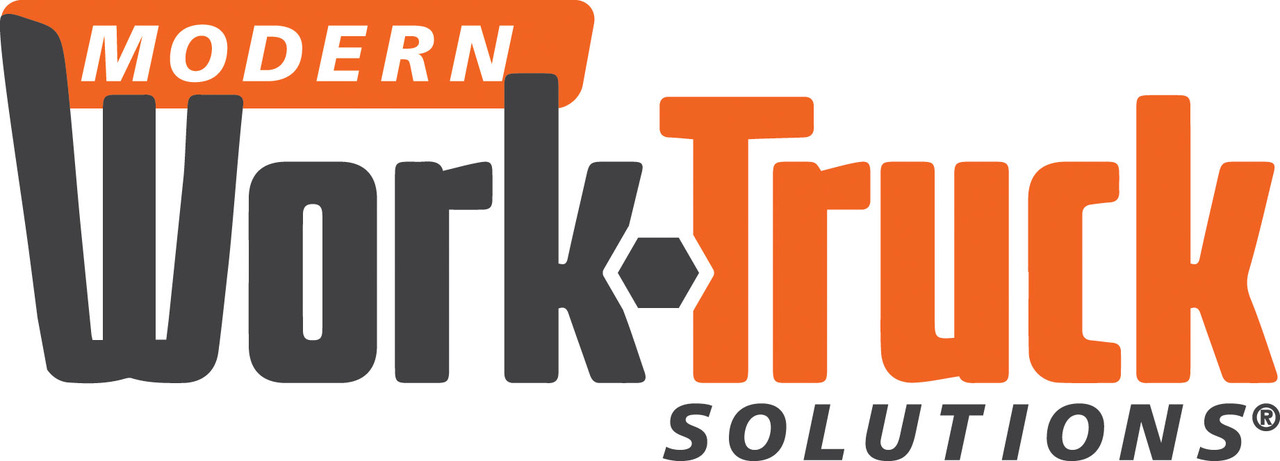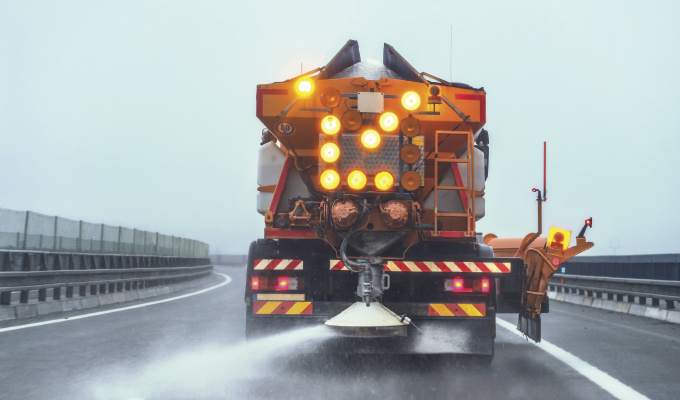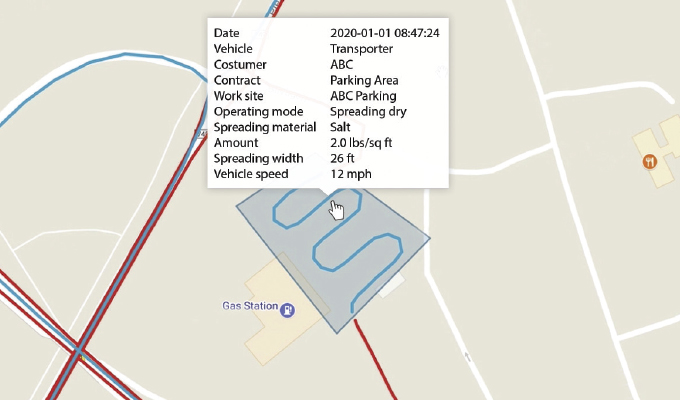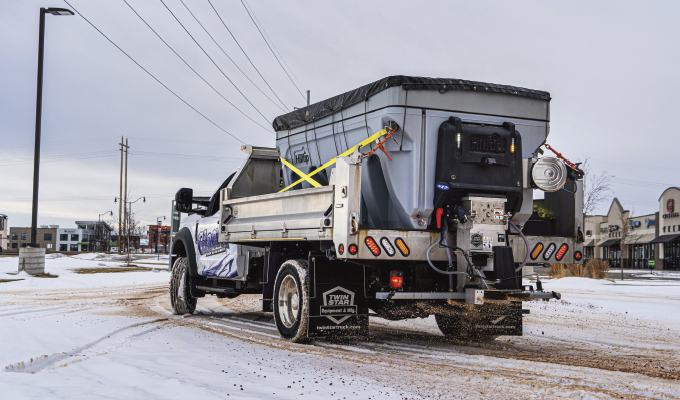Ice management demands strategic planning, proactive maintenance, and smart decision-making. Many contractors fall into common traps that reduce effectiveness and profitability. By refining your approach, you can minimize waste, improve reliability, and enhance overall service quality. Here’s how to take your winter operations to the next level.
GEAR UP BEFORE THE SNOW FALLS
Avoid: Last-minute equipment checks.
Waiting until the first storm to inspect your gear is a costly mistake. Batteries can die, parts may seize, and electrical systems might corrode—all issues that can cripple your response when time is critical. Too many contractors assume that because their equipment worked last season, it will automatically be ready to go. This assumption can lead to expensive downtime and missed service calls.
Adopt: A proactive approach.
Ensure everything is in top condition before winter begins. Verify that your software subscriptions are up to date, test all moving parts for smooth operation, and inspect electrical connections for corrosion. Hydraulic systems should be checked for leaks, and spreaders and sprayers should be run empty to detect any malfunctions early. Inspect hoses, fittings, and control units to make sure they are not damaged or deteriorating. A well-prepared operation avoids unnecessary delays and costly downtime, allowing you to provide reliable service even in the worst conditions.
KEEP EQUIPMENT IN PRIME CONDITION
Avoid: Ignoring maintenance between storms.
Neglecting post-storm cleanup and inspections leads to rust, salt buildup, and mechanical failures—problems that worsen over time and increase repair costs. Contractors who wait until something breaks often find themselves stuck in an emergency repair situation, leading to lost productivity and revenue.
Adopt: Routine cleaning and inspections.
After each use, thoroughly rinse spreaders and sprayers to remove salt residue, paying special attention to the auger and conveyor systems. Flush liquid systems with water and antifreeze to protect pumps and seals from freezing temperatures. Regularly check bolts, lubricate moving parts, and test digital controllers to ensure they are functioning properly. Cleaning isn’t just about aesthetics—it extends the lifespan of expensive equipment and prevents costly mid-season breakdowns. Additionally, scheduling regular deep inspections can reveal early signs of wear, allowing you to address minor issues before they become major failures.
MANAGE MATERIALS WISELY
Avoid: Pre-loading salt too early.
Loading salt into a spreader before a storm may seem like a time-saver, but it often leads to moisture absorption and freezing, turning the material into a solid block that clogs your system. Likewise, if sprayers are left outside, any brine left in hoses can freeze before the main tank does, causing costly delays.
Adopt: Smart material storage and planning.
Maintain an adequate supply of salt and brine for multiple storms, stored in dry, covered areas to prevent freezing and clumping. Establish agreements with suppliers ahead of the season to lock in pricing and ensure availability. Pre-wet applications can also improve salt efficiency while reducing overall usage. Managing materials efficiently keeps your operations running smoothly even during peak winter conditions. Moreover, implementing tracking and inventory systems allows contractors to monitor usage and prevent shortages before they occur.
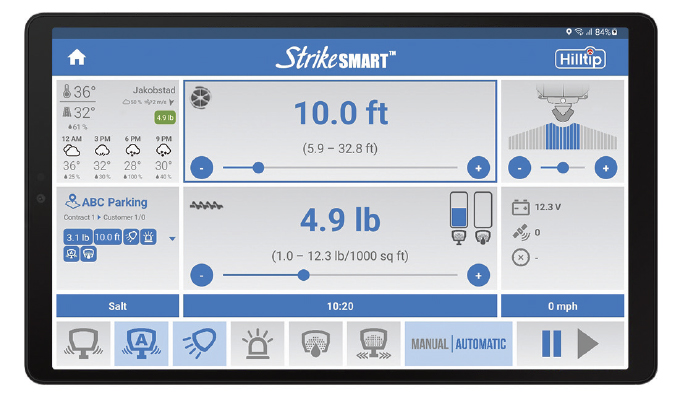
DIAL IN THE RIGHT APPLICATION RATES
Avoid: Guessing material spread rates.
Many contractors rely on preset controller dials without verifying actual material output. This leads to wasted material, uneven application, and increased liability risks for slip-and-fall incidents. Applying too much salt can be just as problematic as applying too little—overuse increases costs, damages pavement, and has negative environmental impacts.
Adopt: Accurate calibration techniques.
Regularly calibrate spreaders and sprayers, even with the same material, as density can shift over time. Calibration should be done using actual brine in winter conditions for realistic results. Advanced controllers, like Hilltip’s HTrack system, can automate application rates based on speed and surface conditions, ensuring precision and reducing material waste. Taking the time to calibrate ensures both efficiency and compliance with environmental regulations. Additionally, operators should document their calibration settings for different materials and conditions, allowing for quick adjustments when necessary.
STAY AHEAD WITH SMART INNOVATIONS
Avoid: Sticking to outdated methods.
The winter maintenance industry is evolving rapidly due to new technology, environmental regulations, and labor shortages. Failing to keep up can put contractors at a competitive disadvantage. The days of relying solely on visual application and experience are fading as data-driven solutions become more prevalent.
Adopt: A culture of continuous improvement.
Stay informed about the latest advancements in de-icing materials, equipment, and tracking technologies. Invest in smart systems that optimize application rates and monitor performance in real-time. Implement GPS tracking to streamline route planning and reduce wasted fuel. Embracing innovation boosts efficiency, enhances service quality, and ensures long-term business success. Additionally, participating in industry conferences and training programs can provide valuable insights into best practices and emerging trends.
OPTIMIZE ROUTE PLANNING AND EFFICIENCY
Avoid: Wasting time with inefficient routes.
Poorly planned routes increase fuel consumption, extend response times, and lead to higher operational costs. A disorganized approach to dispatching teams can cause missed appointments and unsatisfied clients.
Adopt: Strategic route optimization.
Use route-planning software to design efficient service paths, prioritizing high-traffic and critical areas. Coordinate with clients in advance to set service expectations and ensure priority areas are covered first. Smart route planning saves time, reduces costs, and improves overall service efficiency. Additionally, reviewing past route performance can highlight areas for further efficiency improvements.
Refining your approach to ice management can increase efficiency, lower costs, and improve service quality. Avoiding common pitfalls and implementing best practices will set you apart as a leader in the industry. With the right preparation, maintenance, and technology, your winter operations can be more profitable, sustainable, and reliable. By continuously learning and adapting to new advancements, contractors can ensure long-term success and customer satisfaction in an ever-changing industry.
about the author
Craig Sandmann is the managing director at Hilltip North America. To learn more visit, www.hilltipna.com.
